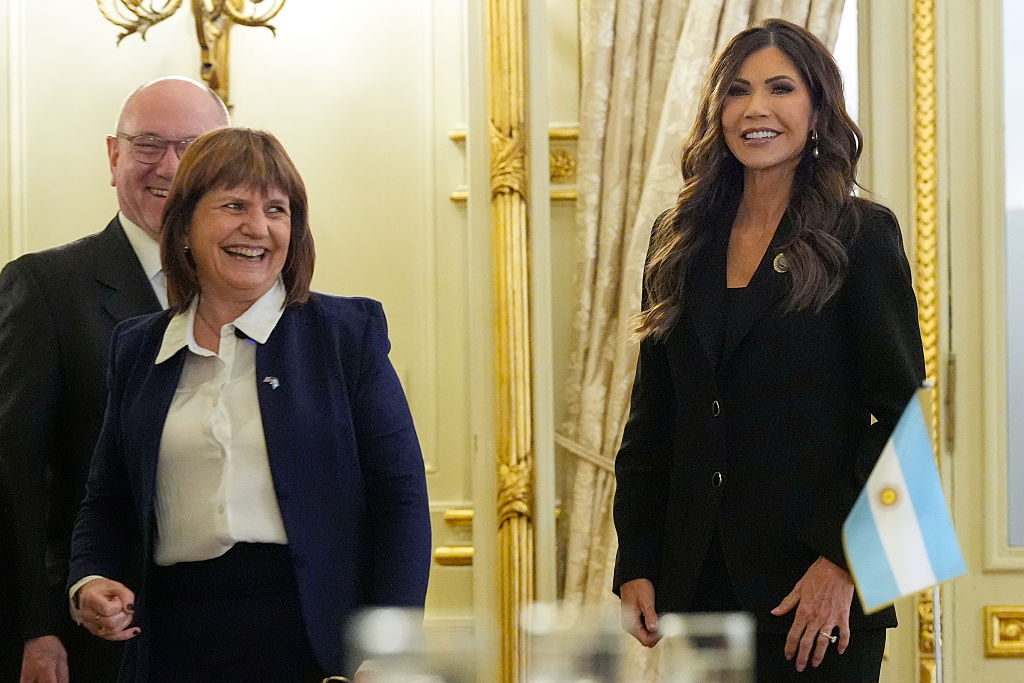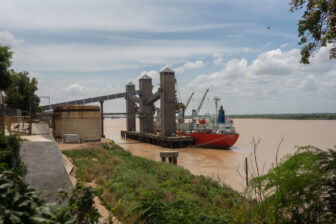
On July 28, Department of Homeland Security Secretary Kristi Noem announced that the United States is starting the process for Argentina to reenter the Visa Waiver Program (VWP), which allows nationals of 42 countries to travel to the U.S. for business or tourism for up to 90 days without needing to obtain a visa.
Participation in the VWP carries significant economic, cultural, and symbolic benefits. Citizens of member countries can visit the U.S. more easily, which boosts people-to-people ties and allows for greater cultivation of diaspora networks. The ease of travel for business purposes facilitates bilateral commerce, and for the U.S., it is estimated that VWP travelers contribute nearly $231 million to local economies every day. Membership also signals long-term trust and alignment from the U.S. government; indeed, almost every country in the VWP is regarded as a high-income democracy.
In a post stemming from her visit to Argentina in late July, Noem thanked National Security Minister Patricia Bullrich for her “partnership in strengthening our shared security efforts.” Bullrich replied, posting that “Cooperation and shared commitment are the way to face challenges and protect our people.”
Despite these warm words and President Javier Milei’s persistent efforts to cultivate ties with the Trump administration, Argentina’s path to rejoining the VWP will be challenging. To qualify, Argentina will need to navigate political, economic, and security considerations that have blocked almost every other Latin American country from the VWP to date. The outcome of the accession process stands to have important implications not only for Argentina-U.S. relations but also for Milei’s reelection prospects.
Latin America’s troubled VWP history
If Argentina is successful in rejoining the VWP, it would be the only Latin American country in the program other than Chile. Of the 41 other VWP countries, 32 are European, five are Asian, two are Middle Eastern, and two are in Oceania.
Only two countries have ever been removed from the VWP, and both are Latin American. Argentina previously participated in the program from 1996 to 2002 before being removed after a large number of tourists began overstaying their visas as a result of the 2001 Argentine economic crisis. Uruguay, which participated in the VWP from 1999 to 2003, was also removed after experiencing a recession and a spike in overstay rates.
Chile joined the VWP in 2014, but the country’s tenure has been marred by recent controversy. Chilean burglary rings have used the VWP to engage in high-profile thefts. In March, a bipartisan group of lawmakers signed a letter calling for Chile’s participation in the VWP to be suspended. The DHS Secretary has the authority to suspend countries from the VWP, though so far Noem has praised Chile’s efforts to stay compliant with VWP security requirements.
Argentina’s path to the VWP
To qualify for the VWP, Argentina must satisfy several legally defined criteria while continuing to meet other subjective metrics.
One of the most essential requirements for VWP membership is having a tourist (B-visa) refusal rate of less than 3%. While Argentina’s refusal rate was under 3% in Fiscal Years (FY) 2020 and 2021, it was slightly over in FY 2022 and rose above 8% in FY 2023 and 2024. Going by the rules, the only Latin American country that could qualify for the VWP is Uruguay, not Argentina.
Argentina will need to find a way to reduce its tourist visa refusal rate at a time when the U.S. State Department is implementing stricter vetting procedures for international travelers. One way it could do so is by following Romania’s strategy: The Eastern European nation managed to decrease a similar refusal rate in 2024 by launching a public campaign to get its citizens with valid but expired U.S. visas to renew them.
However, new visa rules will require some Argentines with expired tourist visas to sit for an interview to renew, which will reduce the number of renewals and slow the process. Additionally, the State Department is planning to require tourists from some countries to post bonds ranging from $5,000 to $15,000 in order to enter the U.S. While it is unlikely that Argentina’s overstay rate will be deemed high enough to warrant being subjected to this new measure, Argentina will need to ensure it remains in lockstep with U.S. foreign policy objectives and that it does not suffer any economic setbacks that could lead to higher visa refusal rates.
Diplomatic and electoral implications
Despite these obstacles, Argentina is already benefiting from unofficial but essential considerations that play a part in the VWP designation process. The Trump administration has expressed confidence in Milei’s economic reforms, which will in turn lead to fewer visa denials on the grounds of financial conditions within Argentina. It’s likely that the political affinity between President Trump and Milei has also led to the U.S. government going out of its way to highlight two immigration metrics where Argentina is doing well: overstay rates and tourist flow.
In her announcement, Secretary Noem cited Argentina’s visa overstay rates as a reason for putting Argentina on the VWP accession track, calling Argentina’s rates the “lowest in Latin America.” This is technically true when applied to tourist visas, but in other visa categories, Uruguay has a lower overstay rate.
The second reason Noem cited, Argentina’s rising tourist numbers to the U.S., matters for more complicated reasons.
As of May, tourism from Argentina to the U.S. grew by 21% year-over-year, the highest increase of any Latin American country during this period. As arrivals from many other countries decline, the administration will be eager to showcase and reward countries that are visiting the U.S. in growing numbers.
International tourist spending in the U.S. is projected to fall by $8.5 billion this year. The Trump administration has dismissed concerns that its restrictive immigration policies and hardline approach to foreign affairs are driving away tourists. In this context, the government may be eager to promote growing tourist markets, like Argentina, to demonstrate that its foreign policy choices have not damaged the U.S.’s reputation abroad or imposed financial costs on sectors of the economy.
While the relationship between Trump and Milei does not matter to the average Argentine voter, the outcomes their partnership produces for Argentina will be critical in determining whether voters will deem Milei’s governance successful ahead of his reelection campaign. Although the process will move too slowly for Milei’s La Libertad Avanza to claim it as a victory ahead of the October midterms, it will nevertheless be able to tout the announcement as a pending benefit Milei’s leadership has delivered.
Argentina re-joining the VWP could boost national pride and optimism after years of economic woes. If the VWP qualification process drags on, however, Milei risks disappointing core constituencies as the 2027 presidential race draws nearer.








